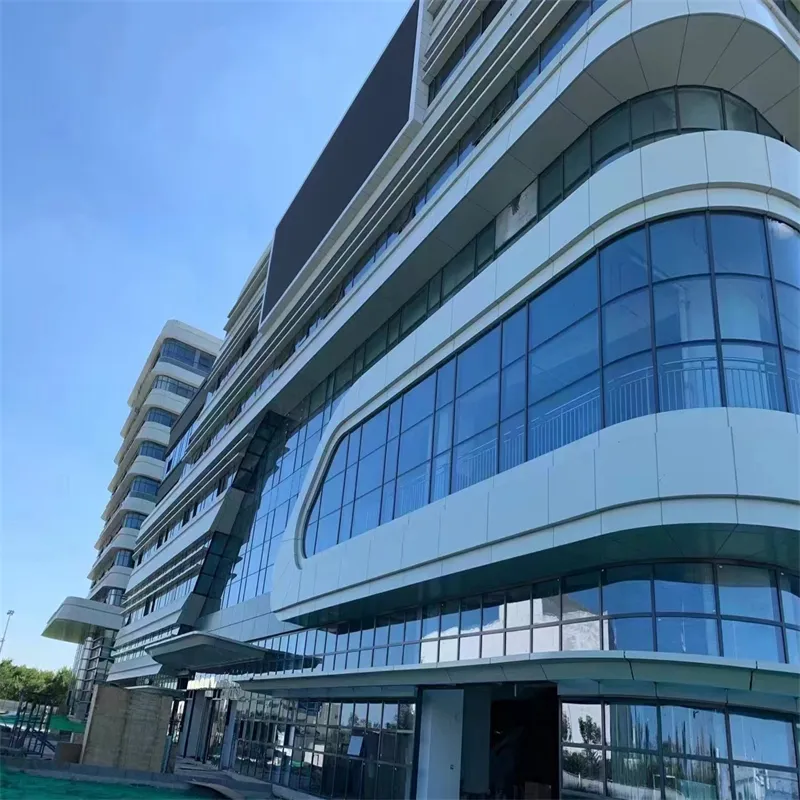Nov . 06, 2024 15:06 Back to list
colored laminated glass
Exploring the World of Colored Laminated Glass
Colored laminated glass is a unique and versatile material that has been gaining popularity in various architectural and design applications. This type of glass combines aesthetic appeal with functional benefits, making it an ideal choice for a variety of projects, from homes to commercial spaces.
Composition and Manufacturing Process
Laminated glass consists of two or more layers of glass bonded together with an interlayer, usually made of polyvinyl butyral (PVB) or ethylene-vinyl acetate (EVA). When color is introduced, the interlayer can be tinted or colored glass can be used, creating an attractive and vibrant appearance. The manufacturing process ensures that the glass maintains its integrity even when broken. The interlayer holds the glass fragments together, minimizing the risk of injury and making it a safe option for buildings and other installations.
Aesthetic Versatility
One of the primary advantages of colored laminated glass is its aesthetic versatility. Designers and architects appreciate the wide range of colors and textures available, enabling them to create stunning visual effects in their projects. Colored laminated glass can serve as a focal point in interiors, create intriguing facades, or add a luxurious touch to furniture. From deep blues and greens to vibrant reds and yellows, the color palette is virtually limitless, allowing for creativity and personalization in every installation.
Functional Benefits
colored laminated glass

Beyond aesthetics, colored laminated glass offers numerous functional benefits. One of its most significant advantages is its ability to block harmful UV rays. The interlayer used in laminated glass can filter out up to 99% of ultraviolet radiation, helping to protect furnishings, artwork, and interior spaces from fading. This feature makes it an excellent choice for sun-drenched areas where UV exposure can be a concern.
Moreover, laminated glass provides sound insulation. The interlayer acts as a barrier, reducing noise transmission between spaces, which is particularly beneficial in urban environments where sound pollution can be an issue. This makes colored laminated glass an ideal choice for windows in offices, hotels, and residential buildings located near busy roads.
Sustainability Features
In today’s environmentally conscious world, the sustainability of building materials is a significant factor in decision-making. Colored laminated glass can contribute to sustainable design principles. It is often made from recycled materials and can be recycled at the end of its life cycle. Moreover, its energy-efficient properties contribute to the overall efficiency of buildings, as it can help regulate indoor temperatures, reducing the reliance on heating and cooling systems.
Conclusion
Colored laminated glass is a dynamic material that combines beauty, safety, and functionality. Its diverse aesthetic possibilities, along with practical benefits such as UV protection and sound insulation, make it a perfect choice for various applications. As architects and designers continue to seek innovative ways to enhance their projects, colored laminated glass stands out as a versatile and sustainable option that can elevate any space. Whether used in residential homes or commercial establishments, this material promises to deliver both style and performance, making it an essential element in modern design.
-
Safety and Style with Premium Laminated Glass Solutions
NewsJun.24,2025
-
Reinvents Security with Premium Wired Glass
NewsJun.24,2025
-
Premium Float Glass Line for Modern Architecture
NewsJun.24,2025
-
Low Emissivity Glass for Energy-Efficient Architecture
NewsJun.24,2025
-
High-Performance Insulated Glass Solutions for Modern Architecture
NewsJun.24,2025
-
Elevates Interior Style with Premium Silver Mirror
NewsJun.24,2025
Related PRODUCTS














